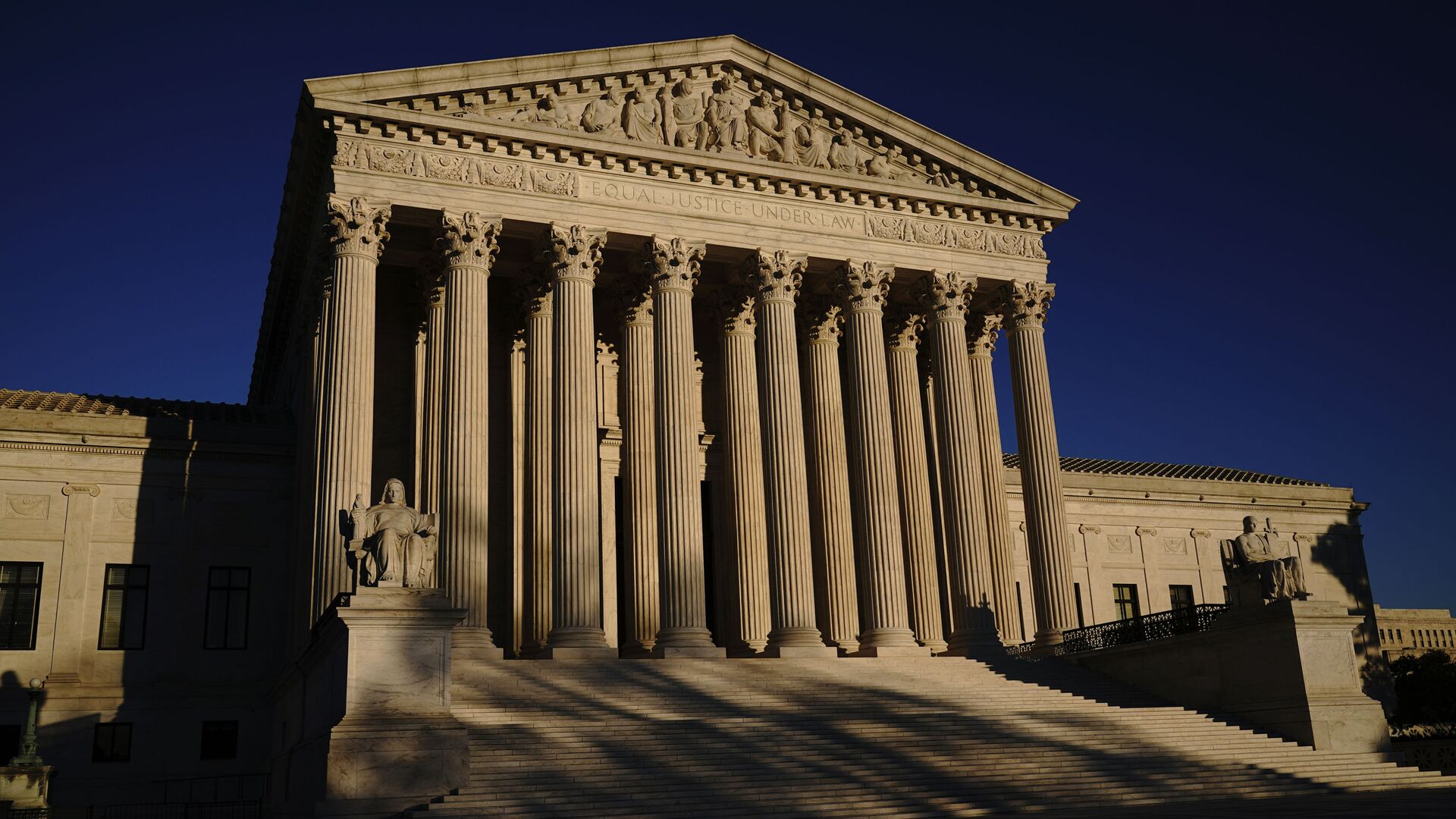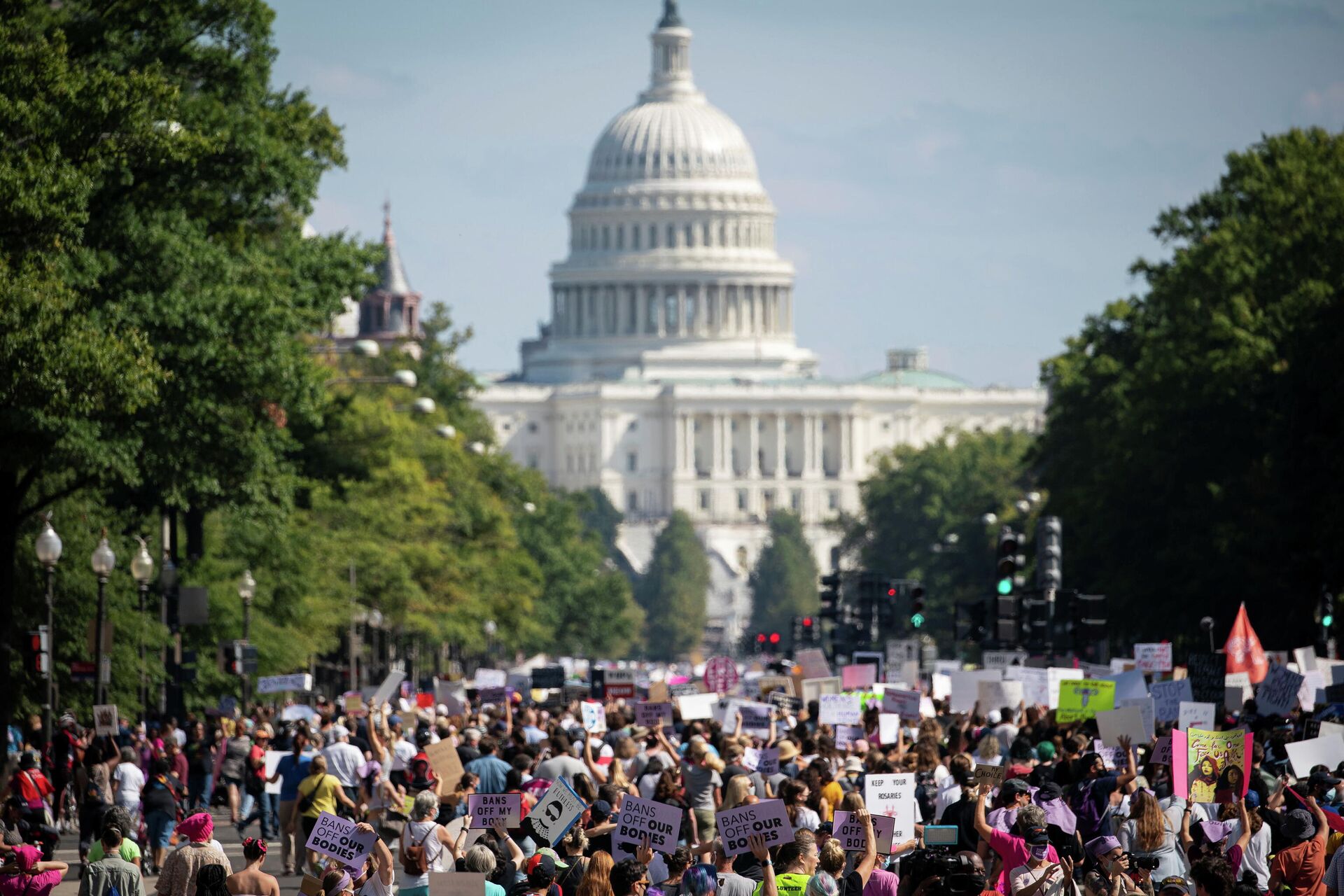DOJ Asks US Supreme Court to Re-suspend Texas’ Anti-Abortion Law After Lower Court Drops Ban
20:15 GMT 18.10.2021 (Updated: 13:25 GMT 06.08.2022)

© AP Photo / J. Scott Applewhite
Subscribe
Texas’ controversial “heartbeat” law will return to the US Supreme Court again as the US Department of Justice tries to get the law suspended during litigation. Opponents of the law say the high court violated its own rulings by allowing it to take effect, and fear it could signal a readiness to strike down abortion rights altogether.
The new brief filed on Monday by Acting Solicitor General Brian Fletcher asks the Supreme Court to remove a stay put in place by a federal appeals court last week. That stay reversed another order by a US federal judge the week prior, which suspended the law, SB 8, while litigation over its legality was still playing out in the courts.
In other words, the DOJ wants the law to be suspended again, calling it “clearly unconstitutional.”
SB 8 was previously at the Supreme Court in early September, when a group of abortion providers and women’s health advocates petitioned the court to block the law from going into effect. The court rejected their petition in a late-night “shadow docket” decision, arousing fury among not only the activists, but also the court’s three-judge liberal minority, who felt the decision had been made too hastily.
“The Court’s order is stunning,” Associate Justice Sonia Sotomayor wrote in her dissent. “Presented with an application to enjoin a flagrantly unconstitutional law engineered to prohibit women from exercising their constitutional rights and evade judicial scrutiny, a majority of Justices have opted to bury their heads in the sand.”
So-called “heartbeat” laws like SB 8 ostensibly ban abortions once a doctor can detect what abortion opponents describe as a heartbeat; however, the indicator to which they refer isn’t a true heartbeat, but rather electrical signals fired by a group of cells that would eventually develop into the fetus’ heart many weeks later. The law effectively bans abortions as early as six weeks after conception, at a time when the vast majority of women are not yet aware they are even pregnant.
SB 8 makes no allowance in its ban for rape or incest; in response to criticisms of the law’s inflexibility, Texas Governor Greg Abbott, who signed the bill into law in April, said his administration would “eliminate all rapists” in the state. The law also has an unusual enforcement method, as it allows anyone to sue anyone else for not just performing a banned abortion, but also anyone who “aids and abets” such an abortion - an extremely broad and ill-defined concept.

Supporters of reproductive choice march to the U.S. Supreme Court during the nationwide Women's March, held after Texas rolled out a near-total ban on abortion procedures and access to abortion-inducing medications, in Washington, U.S., October 2, 2021
© REUTERS / ALEXANDER DRAGO
Opponents of the law have said the law will ban as many as 85% of abortions in the Lone Star State. They have also pointed out that in the Supreme Court’s 1973 decision in Roe v. Wade, which established the legal right to an abortion in the US and laid out the legal structure for its regulation, bans restrictions on abortion during the first trimester of pregnancy, which lasts until the 13th week. Thus, in allowing SB 8 to take effect, the court ignored the legal framework of its own prior ruling.
The DOJ’s Monday filing takes up this argument, writing that “SB 8 defies those precedents by banning abortion long before viability - indeed, before many women even realize they are pregnant. Texas is not the first State to question Roe and [Casey v. Planned Parenthood]. But rather than forthrightly defending its law and asking this Court to revisit its decisions, Texas took matters into its own hands by crafting an ‘unprecedented’ structure to thwart judicial review … Texas has, in short, successfully nullified this Court’s decisions within its borders.”
"The question now is whether Texas’s nullification of this Court’s precedents should be allowed to continue while the courts consider the United States’ suit,” Fletcher adds in the filing. “As the district court recognized, it should not.”
On December 1, the high court is also scheduled to hear Jackson Women’s Health Organization v. Dobbs, a case dealing with a similar law to Texas’ but in which the court has explicitly been asked to review the legality of the 1973 Roe ruling. In the wake of its September 1 decision on SB 8, abortion advocates fear the court’s conservative majority is now positioned to strike down Roe entirely.
In response, Democrats have passed through the US House of Representatives a bill that would codify Roe vs. Wade into federal law, but it is unlikely to pass the Senate, where Democrats lack sufficient votes to break the filibuster that Republicans can use to stonewall the bill’s progress, as they have numerous other bills on US President Joe Biden’s political agenda. As many as 40,000 protesters demonstrated in Washington, DC, in early October in support of the bill and of Roe in general.


